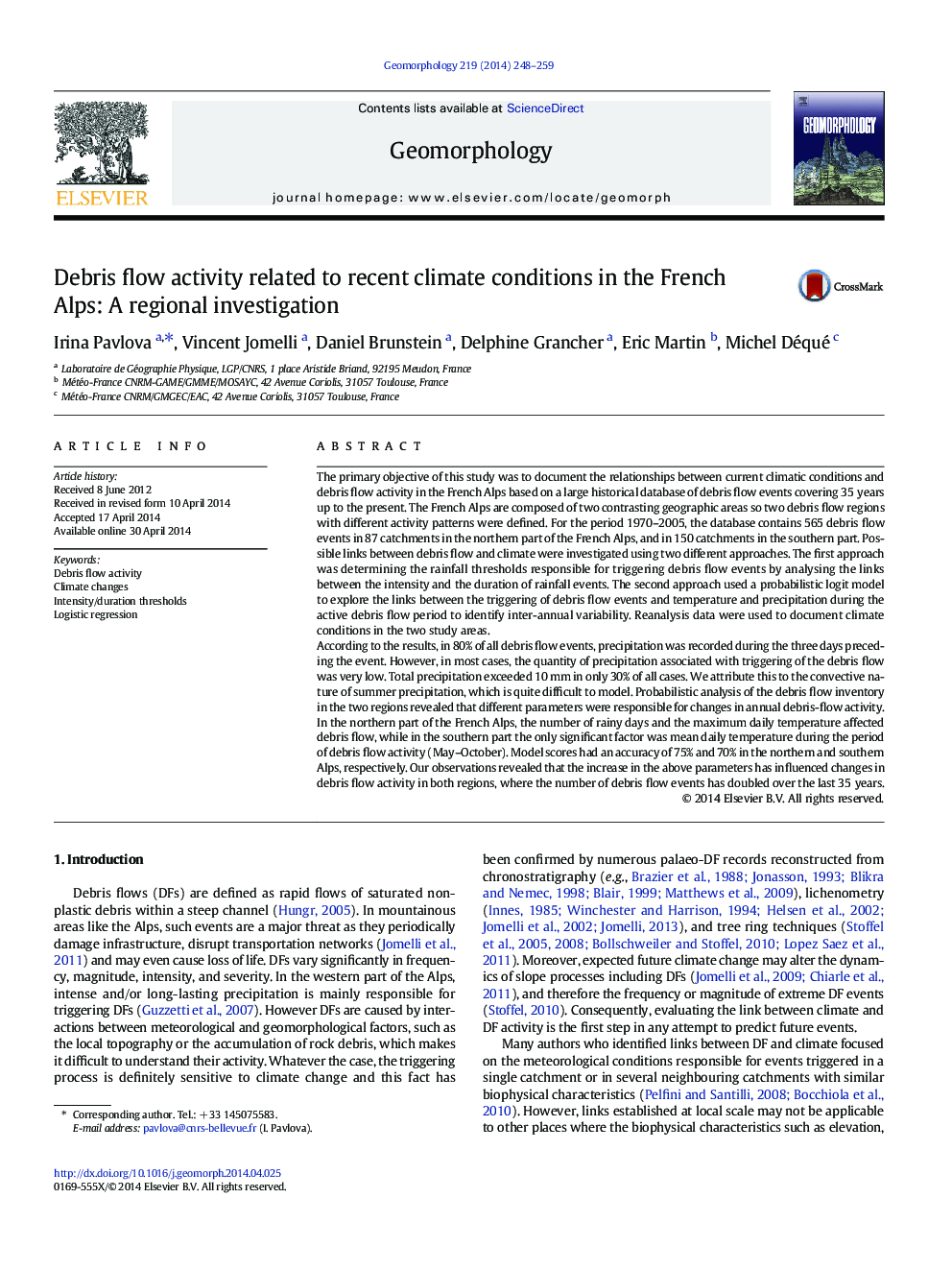| کد مقاله | کد نشریه | سال انتشار | مقاله انگلیسی | نسخه تمام متن |
|---|---|---|---|---|
| 6432475 | 1635430 | 2014 | 12 صفحه PDF | دانلود رایگان |
- We explore a link between debris flow (DF) activity and current climate.
- Our regional study is based on more than 550 DF events since 1970 in the French Alps.
- An annual probabilistic logit model was used to explore DF/climate relationships.
- We indentified northern and southern regions of DF activity.
- Each region has its own meteorological parameters responsible for DF triggering.
The primary objective of this study was to document the relationships between current climatic conditions and debris flow activity in the French Alps based on a large historical database of debris flow events covering 35Â years up to the present. The French Alps are composed of two contrasting geographic areas so two debris flow regions with different activity patterns were defined. For the period 1970-2005, the database contains 565 debris flow events in 87 catchments in the northern part of the French Alps, and in 150 catchments in the southern part. Possible links between debris flow and climate were investigated using two different approaches. The first approach was determining the rainfall thresholds responsible for triggering debris flow events by analysing the links between the intensity and the duration of rainfall events. The second approach used a probabilistic logit model to explore the links between the triggering of debris flow events and temperature and precipitation during the active debris flow period to identify inter-annual variability. Reanalysis data were used to document climate conditions in the two study areas.According to the results, in 80% of all debris flow events, precipitation was recorded during the three days preceding the event. However, in most cases, the quantity of precipitation associated with triggering of the debris flow was very low. Total precipitation exceeded 10Â mm in only 30% of all cases. We attribute this to the convective nature of summer precipitation, which is quite difficult to model. Probabilistic analysis of the debris flow inventory in the two regions revealed that different parameters were responsible for changes in annual debris-flow activity. In the northern part of the French Alps, the number of rainy days and the maximum daily temperature affected debris flow, while in the southern part the only significant factor was mean daily temperature during the period of debris flow activity (May-October). Model scores had an accuracy of 75% and 70% in the northern and southern Alps, respectively. Our observations revealed that the increase in the above parameters has influenced changes in debris flow activity in both regions, where the number of debris flow events has doubled over the last 35Â years.
Journal: Geomorphology - Volume 219, 15 August 2014, Pages 248-259
